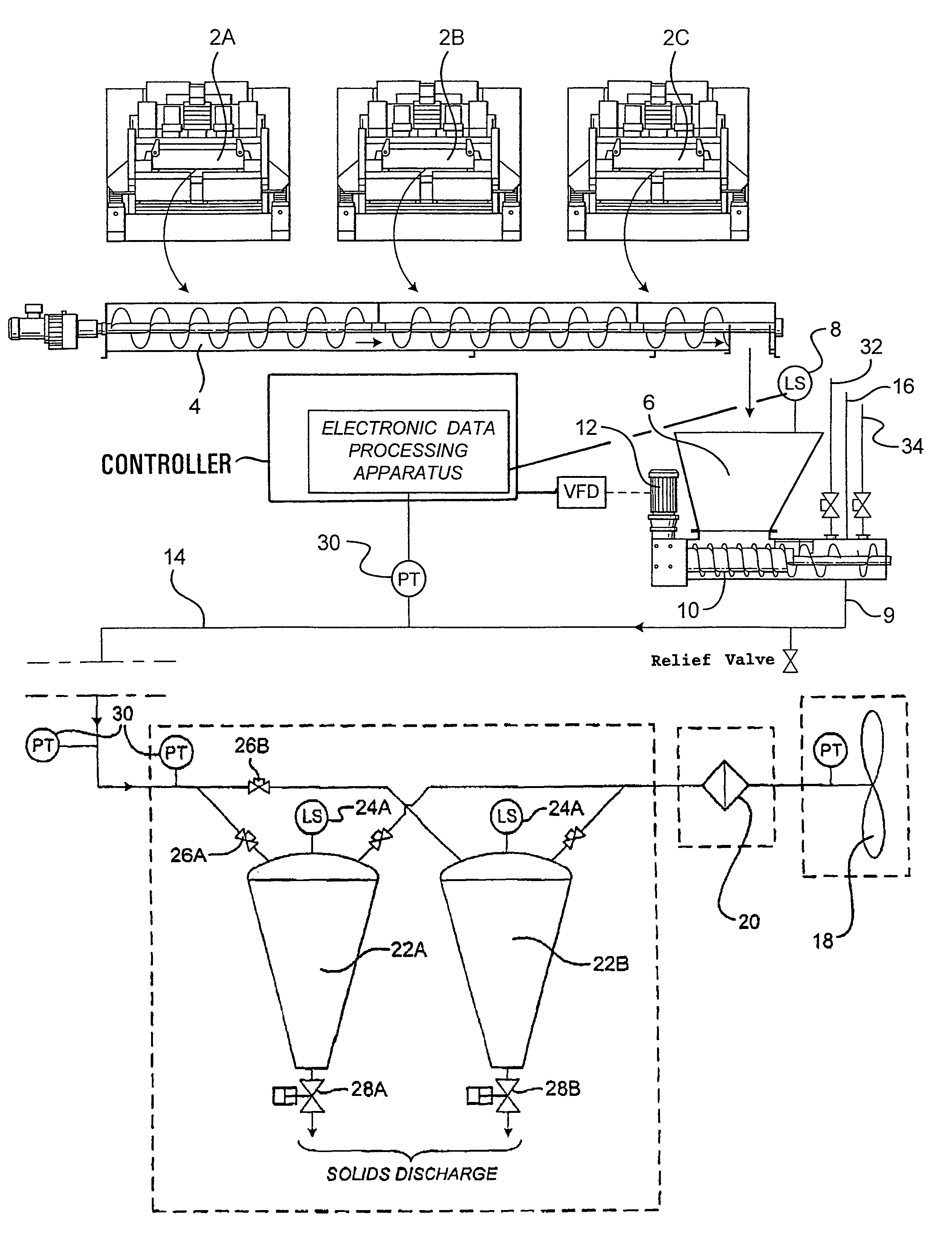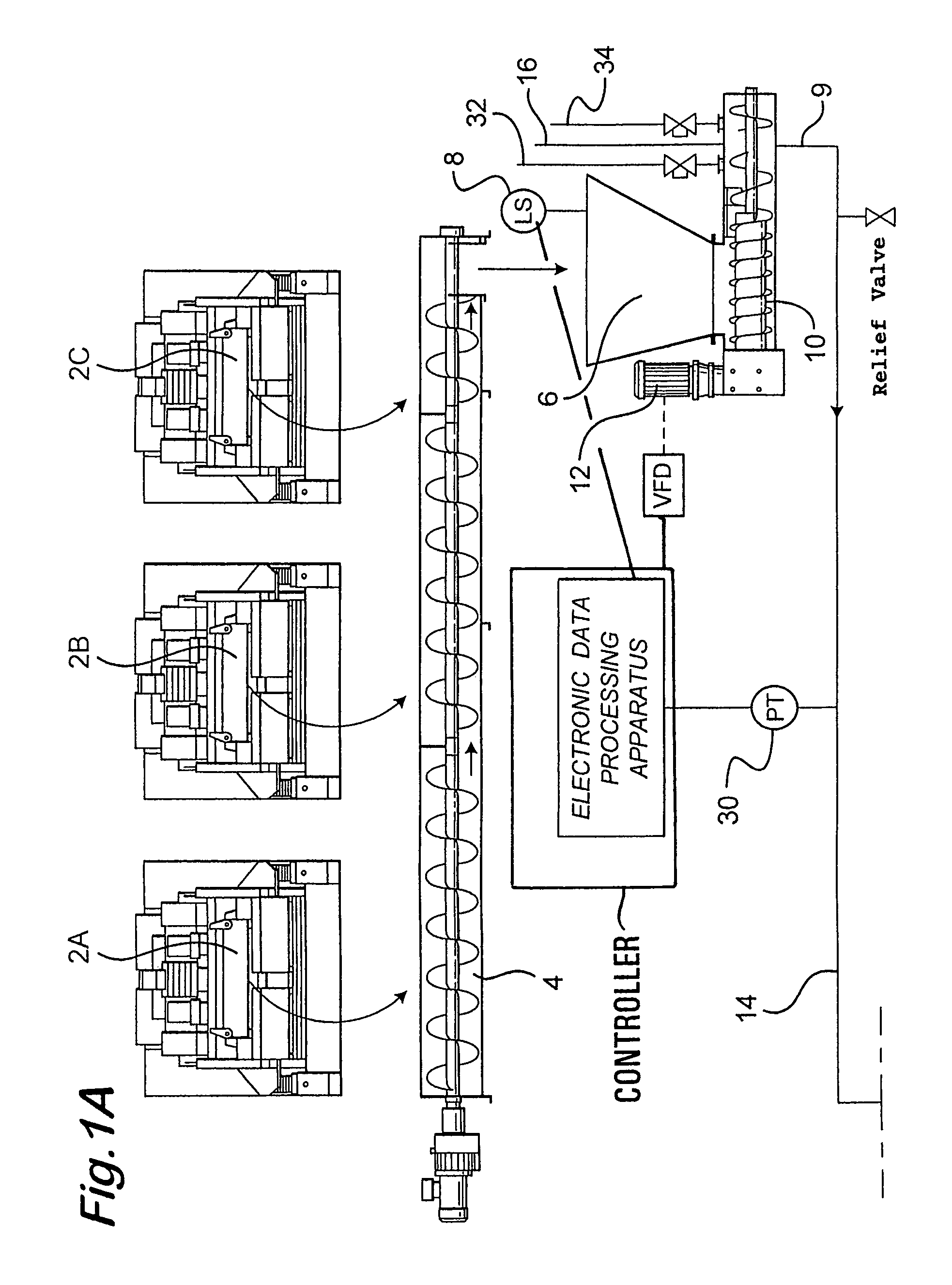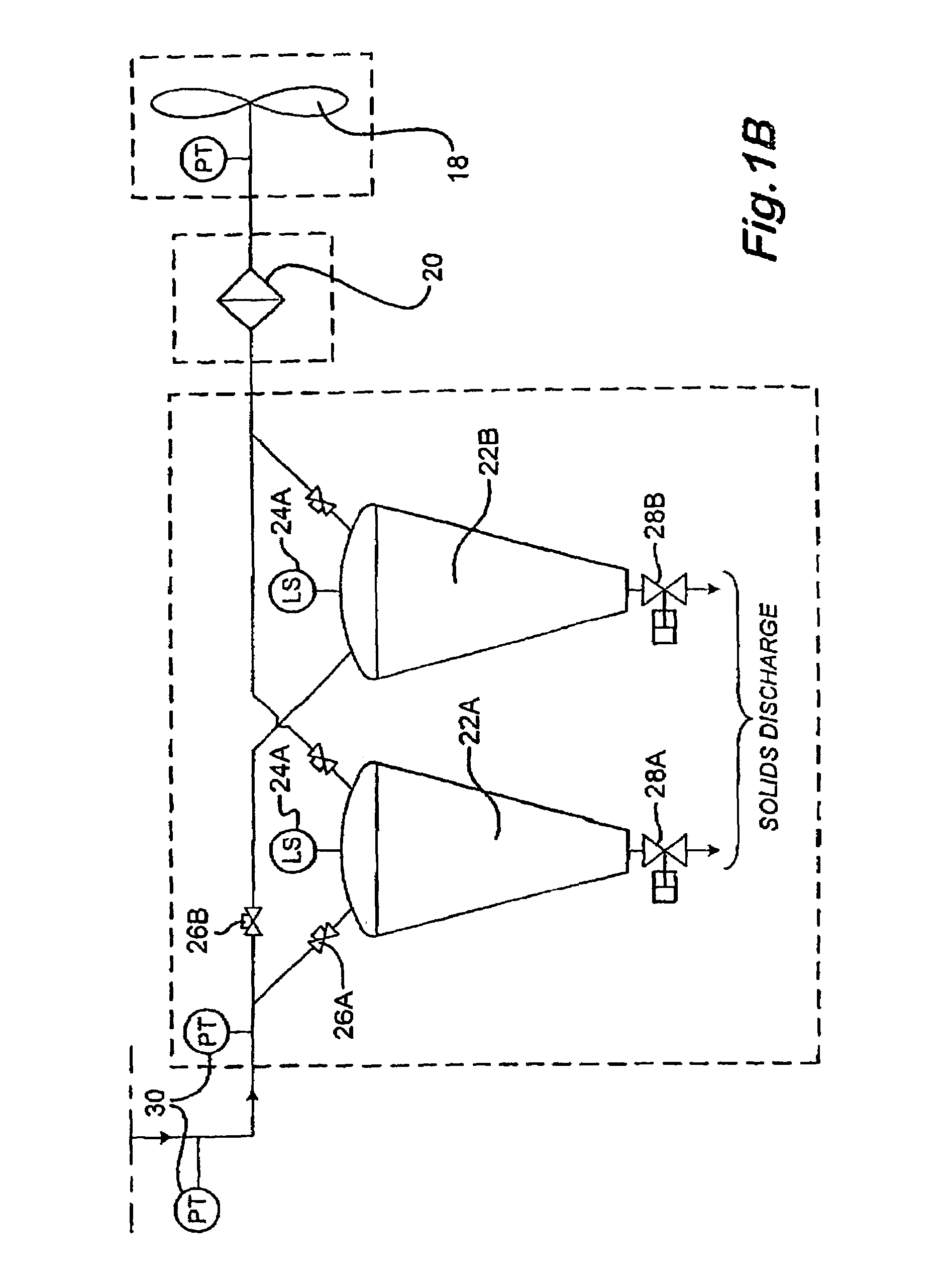Apparatus and method for transporting waste materials
a technology of waste materials and apparatus, applied in bulk conveyors, earthwork drilling and mining, borehole/well accessories, etc., can solve the problems of cuttings to be removed, labour intensive methods, environmental damage, etc., to facilitate cuttings, reduce air density, and increase air velocity
- Summary
- Abstract
- Description
- Claims
- Application Information
AI Technical Summary
Benefits of technology
Problems solved by technology
Method used
Image
Examples
Embodiment Construction
[0033]The first aspect of the invention also provides a method for transporting solid waste, comprising the steps of supplying solid waste material from an upstream waste supply means; transporting waste from the waste supply means using feed means to a pneumatic conveyancing means; which pneumatic conveyancing means comprises a tube within which waste material is transferred from the feed means to a downstream waste collector; wherein said tube is associated with at least one blockage sensing device, and electronic data processing means to process data output from the blockage sensing device, the method further comprising the step of sensing a blockage with said at least one blockage sensing device.
[0034]The second aspect of the invention also provides a method for transporting solid waste, comprising the steps of supplying solid waste material from an upstream waste supply means; transporting waste from the waste supply means using feed means to a pneumatic conveyancing means; whi...
PUM
 Login to View More
Login to View More Abstract
Description
Claims
Application Information
 Login to View More
Login to View More - R&D
- Intellectual Property
- Life Sciences
- Materials
- Tech Scout
- Unparalleled Data Quality
- Higher Quality Content
- 60% Fewer Hallucinations
Browse by: Latest US Patents, China's latest patents, Technical Efficacy Thesaurus, Application Domain, Technology Topic, Popular Technical Reports.
© 2025 PatSnap. All rights reserved.Legal|Privacy policy|Modern Slavery Act Transparency Statement|Sitemap|About US| Contact US: help@patsnap.com



